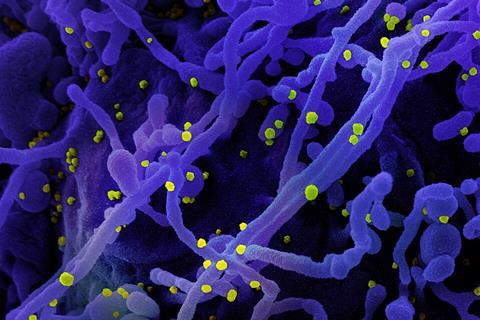A new collaborative study from the University of Eastern Finland, Stanford University, KU Leuven, the University of North Carolina at Chapel Hill, the University of Copenhagen, the University of Massachusetts-Lowell, UNSW Sydney and the US Army Medical Research Institute of Infectious Diseases discloses the discovery and application of a new chemical probe to selectively inhibit both PIKfyve and PIP4K2C as a candidate strategy to combat emerging viruses. The results were published in Nature Communications.

Protein kinases are enzymes that catalyse phosphate transfer from adenosine triphosphate (ATP) to tyrosine, threonine or serine residues in specific target proteins. These phosphorylation events occur in almost every signal transduction pathway and provide regulatory points for therapeutic intervention. Kinases have been successfully utilised as drug targets for the past 30 years, with nearly 90 kinase inhibitors approved by the FDA mostly for the treatment of cancers and inflammatory diseases.
READ MORE: New dual therapeutic strategy shows promise against multidrug-resistant salmonella
READ MORE: New drug target identified for diseases associated with leukemia-causing virus
“The discovery and application of RMC-113, a small molecule inhibitor, represents a step forward in our understanding of host directed lipid kinase pathways. Through our collaborative work both internally and externally, we have been able to answer questions which could not have been achieved individually,” says Senior Researcher Christopher Asquith from the School of Pharmacy at the University of Eastern Finland.
Barrier to resistance
Host directed therapeutic intervention targeting kinases is attractive due to the increased barrier to resistance, which is more readily observed in direct acting antivirals. Host directed targeting also allows for a potentially broader scope of potential action as several host pathways used for virus replication are often common to multiple viruses. In the search for broad-spectrum antivirals, the researchers discovered a small molecule inhibitor, RMC-113, that potently suppresses the replication of multiple RNA viruses including SARS-CoV-2 in human lung organoids.
The researchers demonstrated selective dual inhibition of the lipid kinases PIP4K2C and PIKfyve by RMC-113 and target engagement by its related clickable analogue. Advanced lipidomics revealed alteration of SARS-CoV-2-induced phosphoinositide signature by RMC-113 and linked its antiviral effect with functional PIP4K2C and PIKfyve inhibition. The researchers also discovered PIP4K2C’s roles in SARS-CoV-2 entry, RNA replication, and assembly/egress, validating it as a druggable antiviral target.
Integrating proteomics, single-cell transcriptomics and functional assays revealed that PIP4K2C binds SARS-CoV-2 non-structural protein 6 and regulates virus-induced impairment of autophagic flux. Reversing this autophagic flux impairment is a mechanism of antiviral action of RMC-113. These findings reveal virus-induced autophagy regulation via PIP4K2C, an understudied kinase, and propose dual inhibition of PIP4K2C and PIKfyve as a candidate strategy to combat emerging viruses.
Topics
- Asia & Oceania
- Christopher Asquith
- Emerging Threats & Epidemiology
- Immunology
- Infection Prevention & Control
- Infectious Disease
- KU Leuven
- Pharmaceutical Microbiology
- PIKfyve
- PIP4K2C
- protein kinases
- Research News
- RMC-113
- small molecule inhibitor
- Stanford University
- UK & Rest of Europe
- University of Copenhagen
- University of Eastern Finland
- University of Massachusetts-Lowell
- University of North Carolina at Chapel Hill
- UNSW Sydney
- US Army Medical Research Institute of Infectious Diseases
- USA & Canada
- Viruses







No comments yet